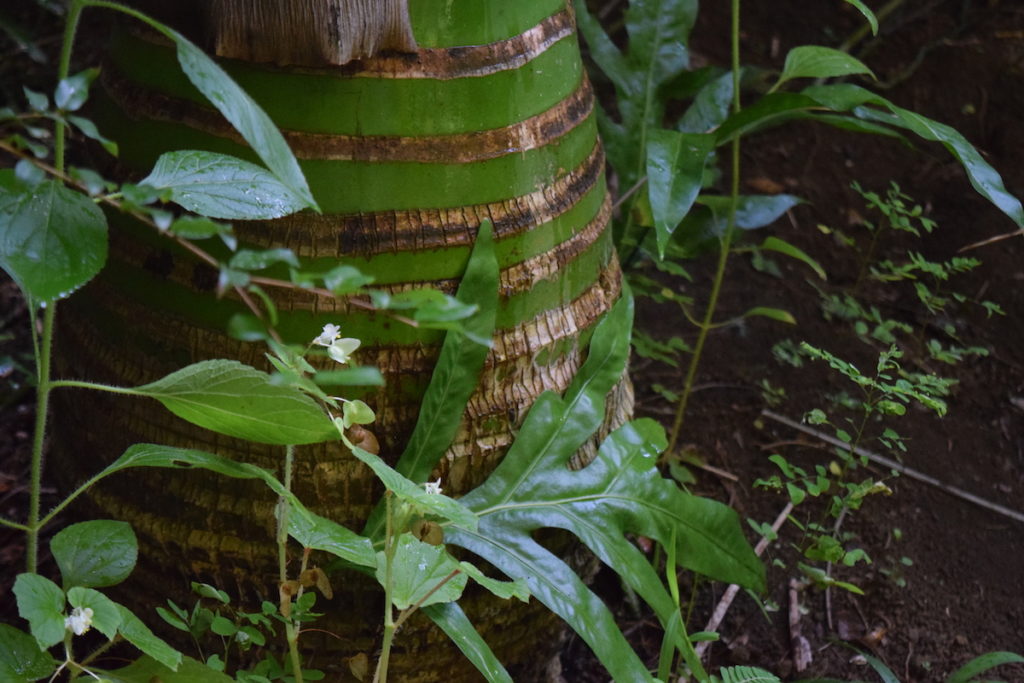
Carpoxylon macrospermum
Carpoxylon macrospermum is a species of palm endemic to the lowland rainforests in the southernmost parts of the Vanuatu archipelago: the islands of Tanna, Futuna and Anatom. Natural stands are very rare; they are more commonly found planted near dwellings or small holdings. This tree is considered “Critically Endangered” according to the IUCN Red List of Threatened Species, with only approximately 40 trees left in the wild.

This is a very tall palm sometimes exceeding 25 meters in height. The generic name (carpo-, fruit; xylon, woody) refers to the thick, woody endocarp that encloses a single seed, which is notable for the pale streaks on the seed coat. The genus Carpoxylon is montypic, meaning that it contains only one species. Capoxylon macrospermum has long been an enigma for palm botanists, as it was “rediscovered” in 1987 on the island of Espirtu Santo, Vanuatu.
Carpoxylon macrospermum is primarily used as ornamental palms in parks and gardens; however, there are several uses recorded from Vanuatu. The stem can be used as a building material and the enlarged base can be prepared as feed for domestic pigs. The leaflets can be used as a traditional roofing material in the same way as the coconut palm (Cocos nucifera). The roots are used in the preparation of numerous remedies. The immature (green) fruit are edible and are often eaten by local inhabitants.
The principal threat to this palm is the deterioration of its habitat by human activities. Deforestation for agriculture and possible loss of the seed dispersal agent(s) contribute to this palm’s uncertain future.
There are currently no specific conservation areas for this species, but like all other native Arecaceae, it is protected by law in Vanuatu. The Vanuatu Environment Unit has classed Carpoxylon macrospermum as high priority in terms of conservation.
Carpoxylon macrospermum is often cultivated in rural areas for its ornamental qualities, we have found examples of cultivated specimens on several islands, including Espiritu Santo, Mallicolo, Paama, Efate, Tanna and Anatom. This palm is both highly ornamental and easy to grow and therefore has great potential in horticulture, however the unavailability of seeds currently limits its use.
There are 9 of this species of palm growing in the Merwin Palm Collection today.
Photos by Sara Tekula